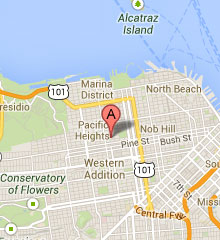Education can empower women to take control of their health and make informed decisions. We created this series in order to address some of the top health questions women ask, especially those whose answers are often myths or misconceptions. In Part I of our series on top women’s health questions we answered questions about heavy menstrual bleeding, changes in a woman’s breasts and STD testing. In Part II we discussed how women can prevent osteoporosis and addressed whether it was sometimes okay to skip a birth control pill.
Read below for Part III of our top women’s health questions series.
Exactly how does a hysterectomy work?
In brief, a hysterectomy is the surgical removal of a woman’s uterus. The procedure is usually performed as a last resort, often in order to relieve an existing medical condition such as: fibroids, prolapse, endometriosis, benign tumors, precancerous/cancerous cell detection, severe bleeding or the completion of the transgender process.
Having a hysterectomy does not automatically means that a woman will begin menopause – this situation only occurs if the ovaries as removed as well, which happens in only two out of the four different types of hysterectomy. The four hysterectomy methods are:
- Radical hysterectomy (normally used in cases of early cervical cancer) – removal of the uterus, cervix, ovaries, fallopian tubes and pelvic lymph nodes.
- Total hysterectomy – removal of the uterus and cervix. The ovaries and fallopian tubes will remain.
- Supracervical hysterectomy – removal of only the uterus.
- Total hysterectomy with bilateral salpingo-oophorectomy – removal of the uterus, cervix, both ovaries and the fallopian tubes. (If only one ovary is removed, the procedure is known as a left or right salpingo-oophorectomy, depending on the location of the removed ovary.)
How can I enjoy myself at summertime get-togethers like picnics and also avoid food poisoning?
Most of us love to invite family and friends to join us for picnics and barbecues in the summertime. But prepared foods spoil quickly, even if they’re not in direct sun. Food poisoning can also rear its ugly head if foods are not cooked to the proper temperature, raw meat or fish is not kept away from other food, or someone forgets to refrigerate or freeze foods promptly.
Although we don’t always know how our food was prepared, certain precautions can make food poisoning much less likely. Certain foods (for instance, raw meat, fish, eggs and beans as well as soft cheeses, unpasteurized milk products and juices, deli and other meats that are pre-sliced) should be avoided by those who are particularly susceptible to food poisoning: pregnant woman, children, seniors and those with a weak immune system.


